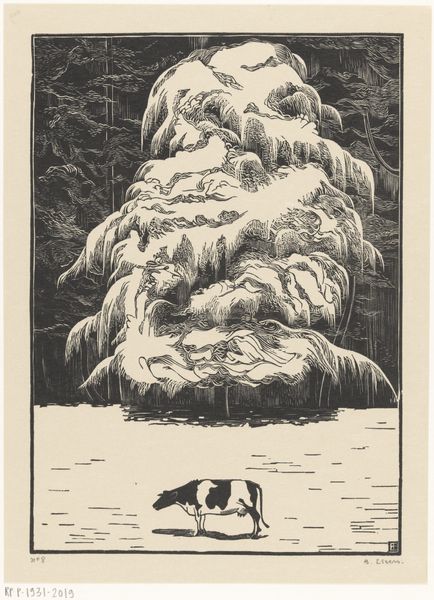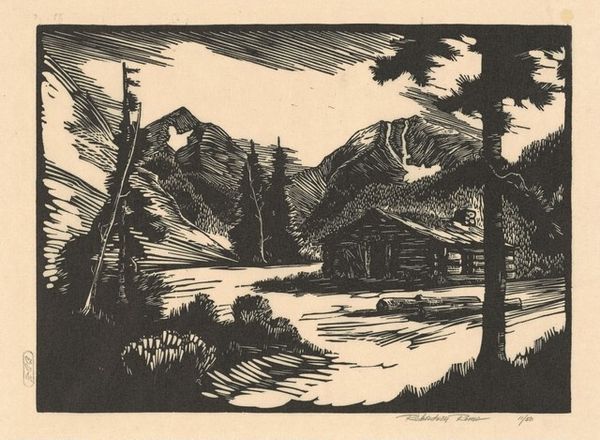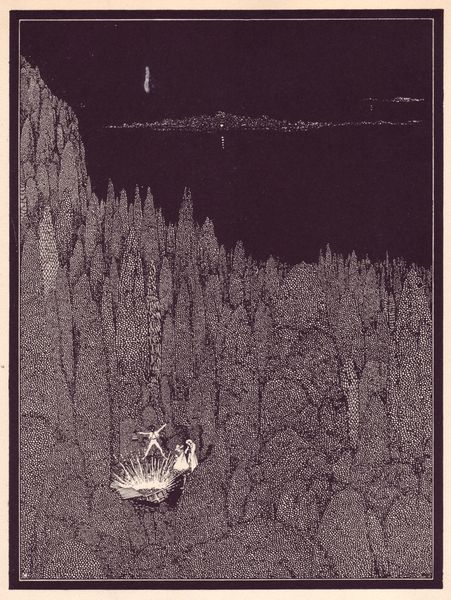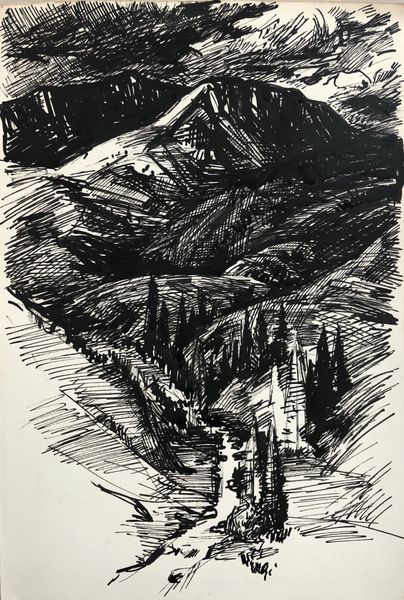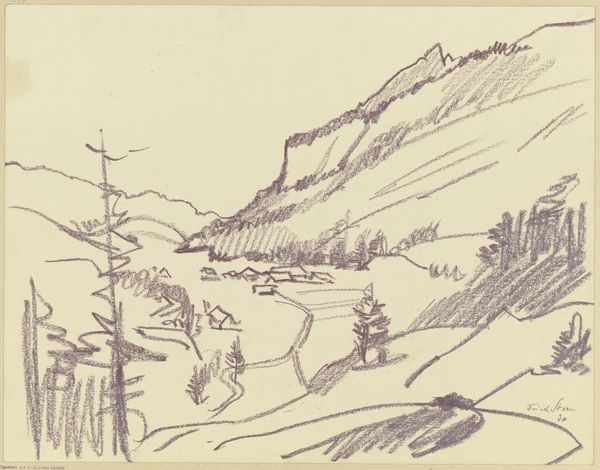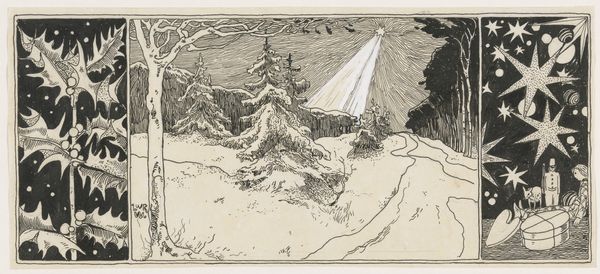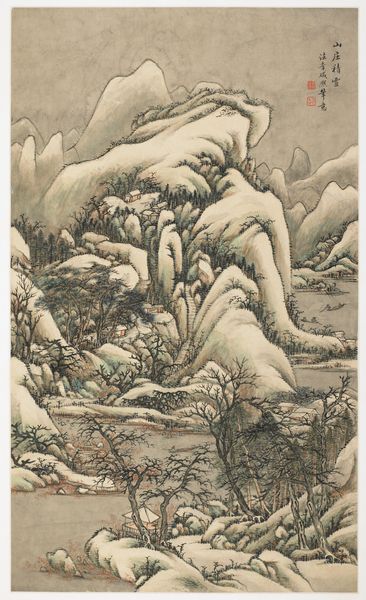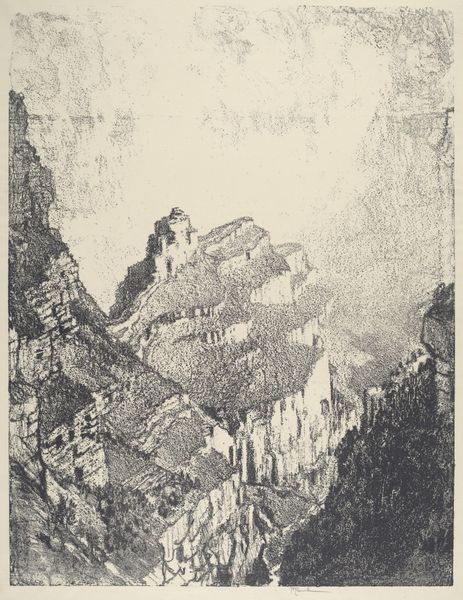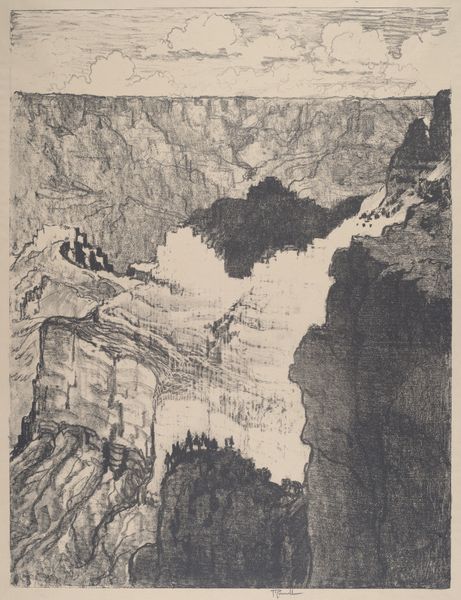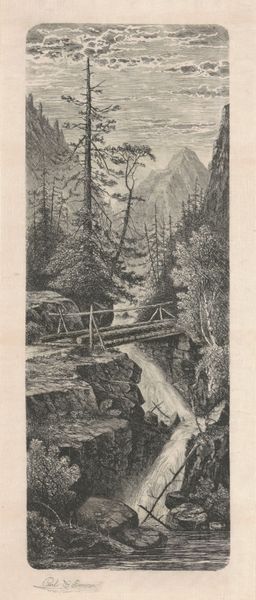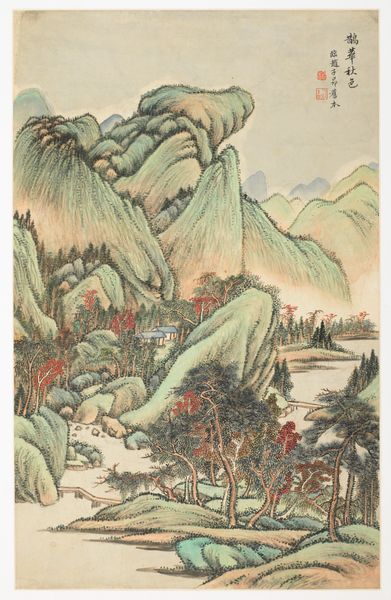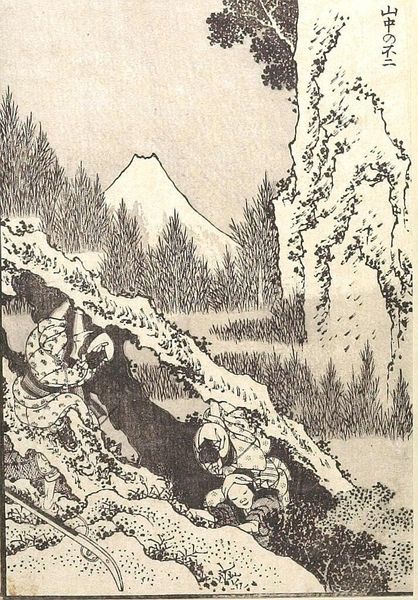
Copyright: Public domain
Curator: Harry Clarke, a celebrated figure in early 20th-century book illustration, completed this drawing titled "Tales of Mystery and Imagination by Edgar Allan Poe" in 1923. It's rendered in ink on paper and exemplifies Clarke's mastery of line work. Editor: My immediate sense is one of quiet foreboding, a landscape imbued with a kind of melancholic energy. The stark black ink, the intricate detailing – it all creates a very unsettling but also very compelling atmosphere. Curator: It certainly captures Poe’s spirit. Clarke's illustrations for Poe's tales are highly regarded, becoming inextricably linked to how we visualize those stories. The linear detail evokes a sense of both dreamscape and nightmare. The context of this piece and its relationship with literature cannot be overlooked, which created a visual interpretation to shape how Poe was received in the 20th Century. Editor: I am struck by the composition and how the artist situates our gaze. There’s this high vantage point, but the branches looming in the upper frame makes one feel slightly trapped. It's all-encompassing, drawing us in. We see small human figures and that feels relevant. What kind of stories are being told here, for what purpose, and by who? How do those dynamics contribute to these power structures of art? Curator: It’s interesting you bring up the framing, because I’m looking at how that affects perspective and control. This was after World War One and there was lots of artistic expression. It appears a post-war society would desire to be freed from the chaos, which makes sense if you observe art from that moment. Do you observe the relationship between line and form? Editor: Absolutely, Clarke utilizes line in an almost obsessive way. It creates textures, shadows, and this feeling of dense detail, but it also highlights the kind of oppressive feelings evident from the image, or a bleak but intricate world that Poe often conjured. In those tiny characters, the detail reminds me of marginalized figures that might be caught in broader forces and circumstances. Curator: He's mirroring social issues through form, scale, and his signature linearity. These drawings have political implications that remain socially important. They're more than images in a book; they signify more important power dynamics from those stories. Editor: It is such a gift, when artists successfully contextualize issues from certain communities so powerfully. Curator: Seeing Clarke’s rendering now has given me a fresh lens on Poe’s writing as a larger cultural framework of class consciousness. Editor: Agreed, analyzing the narratives alongside the social theories truly creates the proper context to analyze Harry Clarke's landscape illustrations.
Comments
No comments
Be the first to comment and join the conversation on the ultimate creative platform.
